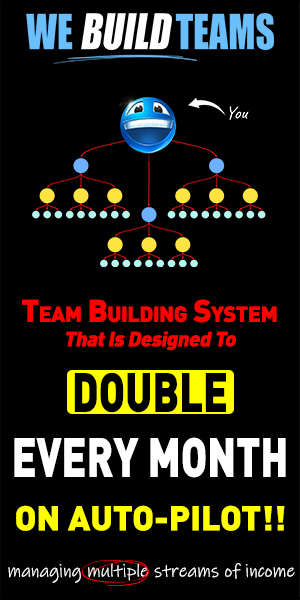MLM Lead Generation, Follow-Up, and Onboarding: How to Break Free from Stalled Growth
If you’ve been in network marketing for a while, you know the frustration: you start with excitement, maybe even see some early success, and then… your growth stalls. Your team isn’t duplicating, your leads have gone cold, and you feel stuck.
The truth? Most marketers fail because of three critical bottlenecks: lead generation, follow-up, and onboarding. If you can solve these consistently, you can build a thriving, duplicatable business.
In this post, we’ll break down why these areas are pivotal, why so many people struggle, and how systems like Worldprofit and Sparky AI can help you finally break through.
1. The Biggest Headaches in MLM: Leads, Follow-Up, and Onboarding
Lead Generation: Why It’s Hard
Most marketers spend too much time chasing cold leads or relying on random social media posts. Leads are the lifeblood of any MLM business. Without a steady stream of qualified prospects, your team can’t grow, and sales stall.
Common problems:
-
Relying on friends and family
-
Random social media posts with no strategy
-
Paying for traffic but not knowing where it’s coming from
-
Low-quality leads that never convert
Follow-Up: Where Most Marketers Fail
Even when you have leads, follow-up is key. Many distributors fail to reach out consistently or in the right way. People disappear, conversations go cold, and deals fall through.
Why follow-up fails:
-
Marketers lack a system to track leads
-
Fear of being “pushy” leads to half-hearted attempts
-
Leads are forgotten after the first contact
Onboarding: The Silent Killer of Duplication
Even if you recruit new team members, they often quit early. Why? Poor onboarding. Without clear guidance and proper training, new distributors feel lost and give up.
Most common onboarding mistakes:
-
Assuming new recruits “figure it out” themselves
-
No structured training or step-by-step guidance
-
Lack of support for early wins
2. Why These Bottlenecks Cause MLM Failure
Statistics show that over 70% of MLM participants fail within the first year. The main reason? These three areas:
-
Inconsistent lead generation → no prospects → no sales
-
Poor follow-up → missed opportunities → stalled growth
-
Weak onboarding → new recruits quit → team fails to duplicate
Solving these three issues is pivotal to long-term success.
3. Why Most People Struggle with Leads, Follow-Up, and Onboarding
It’s not laziness or lack of drive—most marketers fail here because:
-
They don’t have the right tools to automate lead capture and follow-up.
-
They lack a system to train and support new team members.
-
They try to do everything manually, which is time-consuming and inconsistent.
This is where automation and proven systems make all the difference.
4. How Sparky AI Solves These Critical MLM Pain Points
Enter Sparky AI, an AI-powered automation system designed specifically for network marketers. Here’s how it addresses the three major headaches:
1. Automated Lead Generation
Sparky AI delivers a steady stream of qualified leads so you never have to chase prospects manually. The AI sources leads from platforms like Facebook and Instagram, ensuring they’re motivated and interested.
2. Intelligent Follow-Up
Sparky AI automatically follows up with your leads via:
-
Emails
-
Texts
-
Ringless voicemail
-
Facebook retargeting
No lead slips through the cracks, and your pipeline stays full.
3. Onboarding and Team Duplication
Sparky AI guides new team members through training materials, helping them get up to speed quickly. By providing step-by-step onboarding, it ensures duplication, reduces churn, and accelerates team growth.
4. Multiple Income Streams
Unlike other tools, Sparky AI lets you promote multiple network marketing companies from a single dashboard, giving you diverse income opportunities.
5. How Worldprofit Supports Your List-Building for Sparky AI and Beyond
While Sparky AI handles automation, you need a foundation to build your audience. That’s where Worldprofit comes in.
Worldprofit is an all-in-one online platform that provides:
-
Training: Step-by-step lessons to master traffic, list building, and online promotion
-
Tools and resources: Landing pages, email autoresponders, traffic sources, and more
-
Multiple income opportunities: Earn by promoting Worldprofit services or your own affiliate programs
By combining Worldprofit for list-building with Sparky AI for automation, you create a systematic, duplicatable business:
-
Use Worldprofit to build your email list and drive traffic.
-
Introduce Sparky AI to your subscribers to automate leads, follow-up, and onboarding.
-
Grow your team and income without the usual headaches.
This combination is perfect for marketers who are stalled or struggling—it gives you both the traffic and the automation you need to succeed.
6. Why This System Works for Struggling Marketers
-
You stop wasting time on unqualified leads
-
You never miss follow-ups
-
You duplicate your efforts, turning new recruits into productive team members
-
You earn commissions from multiple streams, including Worldprofit itself
In short: you work smarter, not harder.
7. How to Get Started
If you’re serious about breaking through your MLM plateau:
-
Sign up for Worldprofit to build your email list and access traffic tools:
Click here to join Worldprofit -
Explore Sparky AI to automate lead generation, follow-up, and onboarding:
Start your Sparky AI journey -
Combine the two systems for maximum efficiency, duplication, and income growth.
Conclusion
Most marketers fail not because they’re not working hard, but because they don’t have the right system. Lead generation, follow-up, and onboarding are the critical pillars of success—and automation makes them achievable.
By leveraging Worldprofit to build a solid list and Sparky AI to automate the process, you can finally break through the plateau, grow your team, and maximize your income.
Stop struggling with leads, follow-up, and onboarding—and start building the business you’ve always wanted.
Get started today:

